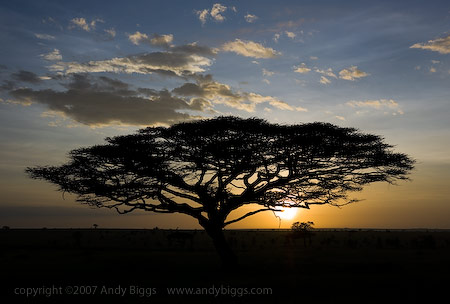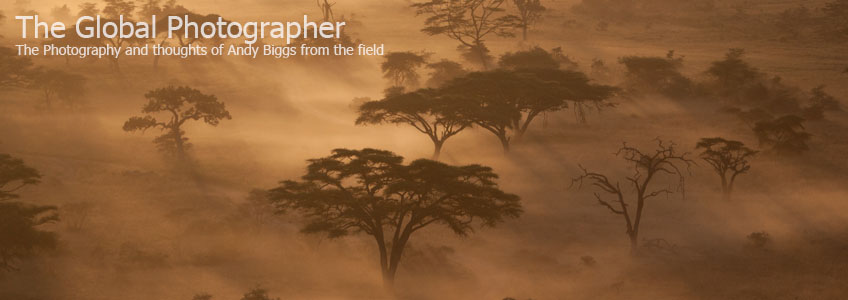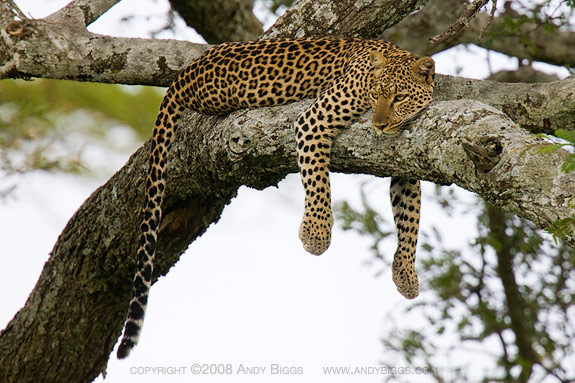Safari (se'fa:ri) n., pl. -ris. An overland expedition for hunting or observing animals; esp in Africa. [Swahili - journey]. Collins dictionary.
If you read the above definition of what a safari is, it should be fairly obvious that in the context of all of my writings on the subject I am not referring to the hunting of animals, but rather the observing and photographing of the animals. Before one embarks on booking a safari in Africa, one needs to know a few things. At the top of the list should be identifying what exactly you want out of your safari, and that will lead you to decisions such as where to go, when to go, what outfitters to work with, what means of accommodations, etc.
In the entries to come, I will write about where to go, when to go, how to pack, techniques for photography, techniques for traveling, and any additional information that might be valuable for the photographer who wants to embark on a photographic safari in Africa. All of my writings are of my own, and may not be applicable for all situations. I will attempt to make broad statements, but sometimes I will illustrate using my own experiences or examples along the way. So here goes.

Where to go?
There are many locations in Africa to go on a photographic safari, and here are some recommendations for some of the most popular locations. Safari destinations are often broken out into two different regions of Africa: East Africa and Southern Africa. Below are some of the highlights from each country, and are not meant to represent the entire country as a whole, but rather a quick and easy way of identifying what makes each country unique and different from the others. All of these countries represent amazing opportunities to watch and photograph wildlife, landscapes and people.
East Africa
Tanzania - Home of the most famous national park in Africa, the Serengeti. The Serengeti ecosystem hosts one of the largest wildlife migrations on the planet, often referred to the wildebeest migration, and also the 'greatest show on earth'. In fact this migration is much more than the wildeebeest, totalling more than 1.5 million. The migration is also made up of 200,000 zebras, 360,00 thompson's gazelle and 12,000 eland. Also home to the world's largest intact and unflooded caldera, Ngorongoro Crater. The world's largest game reserve is also found here, the Selous. Mahale Mountains is one of the best known locations for encounters with wild chimpanzees. Also home to the colorful and very photogenic Maasai tribe. There are more than 125 registered tribes in Tanzania alone.
Kenya - The Masai Mara, part of the greater Serengeti / Mara ecosystem, is also home to the wildebeest migration as they cross over from Tanzania in the northern hemisphere's late summer and fall months. Also home to Amboseli, where the iconic image of elephants with Mount Kilimanjaro in the background can be captured.
Uganda - The primary wildlife viewing experience is for its large primates, chimpanzees and mountain gorillas. Gorillas are the primary attraction at Bwindi Impenetrable Forest National Park. Queen Elizabeth National Park is also a wonderful destination for those who wish to combine a more traditional safari with the gorillas.
Rwanda - Mountain gorilla trekking in their Volcano National Park is by far the most popular activity in Rwanda. Rwanda is enjoying tourism again, and with good reason.
The Democratic Republic of Congo (eastern) - Virunga National Park is home to mountain gorillas, although at the time of this writing rebels are controlling most if not all of the viewing opportunities. I recommend Rwanda or Uganda if you are less 'adventurous'.
Southern Africa
Botswana - Primarily made up of the Kalahari Desert, Botswana has many excellent and remote wildlife viewing areas. The Okavango Delta is an inland flooded delta part of the year, and attracts a wide diversity of game to the area. There are other areas, such as the pans of Nxai Pan National Park and Makgadikgadi Pans game reserve, Linyanti/Kwando, Savute and the rest of the Chobe River region. The San bushmen are residents of the Kalahari, and offer excellent photographic opportunities, as well as true cultural exchanges. Mashatu is another excellent game viewing area that is nestled on the border of South Africa, and is quite often combined with a visit to Mala Mala Game Reserve, as they are both owned and operated by the same family.
Zambia - There are four major wildlife parks, North Luangwa and South Luangwa National Parks, Kafue National Park, and Lower Zambezi National Park. Most safaris tend to concentrate around South Luangwa National Park. Absolutely stellar elephant viewing.
Zimbabwe - There are three main reserves that receive most of the traffic, Hwange National Park (huge elephant population), Matusadona National Park (cape buffalo and elphant) and Mana Pools for its concentration and diversity of wildlife.
Mozambique - The newest wildlife safari destination, and is in the process of developing the Niassa Game Reserve. Niassa is part of the greater Selous ecosystem, and there are studies the indicate significant migration patterns between Selous in Tanzania and Niassa in Mozambique.
Namibia - Home to two different deserts, the Namib and the Kalahari. Home to the tallest sand dunes in the world, the peach colored dunes at Sossusvlei, the Skeleton Coast National Park, the beautiful Himba Tribe, the San bushment and the desert wildlife oasis at Etosha pan.
South Africa - There are many locations to view wildlife in South Africa, and the king of them all is definitely the greater Kruger area. This encompasses Kruger National Park, Mala Mala Game Reserve and the private game reserves that make up the Sabi Sand. There are too many great locations to mention, but South Africa is an excellent safari destination for those who wish for a little less remoteness, who wish for many of the comforts of home and for those who wish to have activities other than going on safari. Madikwe Game Reserve is also an excellent safari location. You can except South Africa to be the best developed country to travel in, which means that self driving is going to be much easier to negotiate.
When to Go on Safari?
This is a subject that is open to much debate, as I often enjoy going on safari during slower months, more wet times of the year and during times when I have a specific goal in mind. With that being said, I think Mark Nolting's 'Africa's Top Wildlife Countries' book has the best summary for when to go on safari. He has also reproduced this cart on the Africa Adventure Company's web site here:
Best Time to go on Safari
Another great resource can be found on the Eyes on Africa web page:
Southern
Africa vs. East Africa, which safari region is better?
In summary, there are many different countries, game reserves and national parks that are worth visitng for a photographic safari. All of the above locations will yield excellent photographic opportunities, all with different highlights and features that make each location unique from the next.
 Monday, April 4, 2011 at 02:49PM
Monday, April 4, 2011 at 02:49PM 




